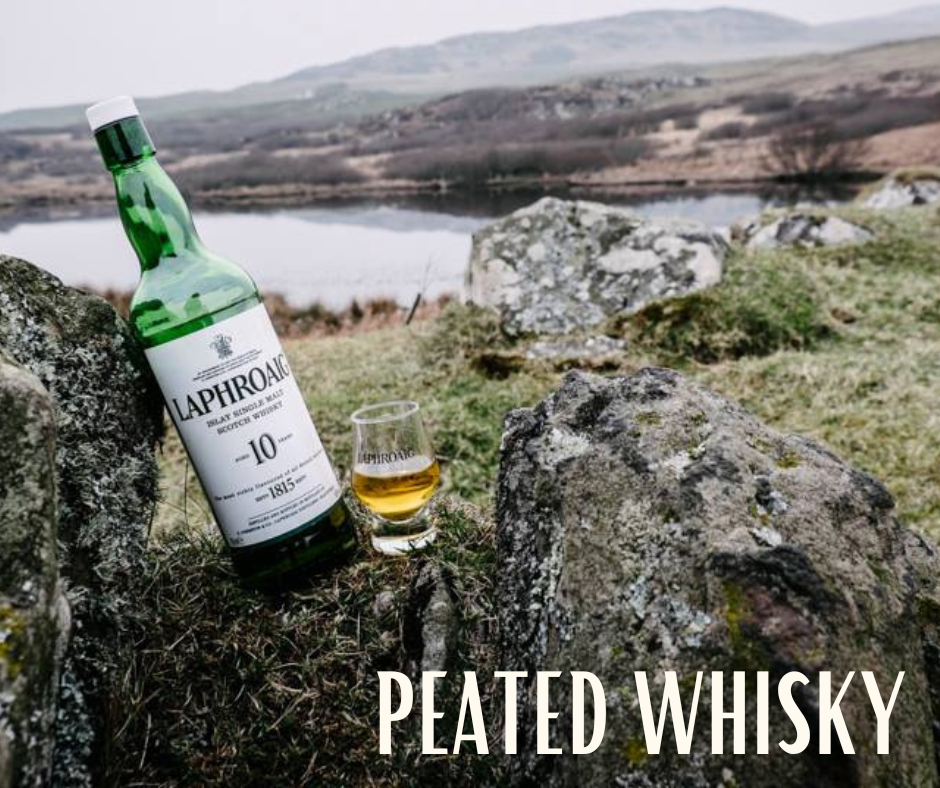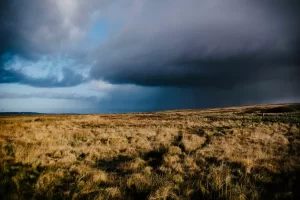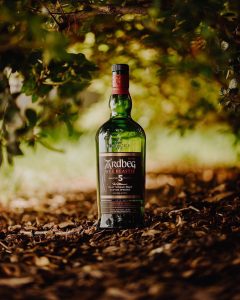What is Peated Whisky? From Its Unique Process to the Best Brands


Are you a new whisky lover looking to branch out? If so, peated whisky is a must-try. Although it may be a very polarising experience, it can be a fun one to explore! Peated Scotch is a whisky that is made with malted barley that has been dried over peat fires, giving it that unique smoky flavour and aroma. Here, we will take a little step into the world of peated whisky.

To understand what makes peated whisky different, it’s important to understand the process. Peated malt starts the same way as traditional malted barley but with an extra step. The barley is dried over a fire made from peat, a type of dense decomposing plant matter that is found in bogs and marshes. Appetizing right!? This process is what gives the whisky that famous smoky flavour.
Peat levels in whisky are usually measured in phenol parts per million (ppm). These levels can offer an indication of how peaty the whisky could be, although it’s not an exact indicator of the smokiness you’ll get in the final product. Here’s a breakdown of peat levels:

Keep in mind, that the ppm measurement is taken from the malted barley and not the final product. Other factors during distillation and maturation can influence the perceived smokiness in the final whisky. It is still a useful tool to give you an idea of what kind of punch you’re going to get.
The type of peat used also plays a role in the flavour profile of a whisky. For example, peat from different regions can produce distinct flavors due to variations in soil. Islay whiskies are known for their strong peaty flavors, with the island’s damp and smoky bogs contributing to the distinct taste. On the other hand, Highland whiskies may use peat from heather or other plants, resulting in a different profile of peat smoke.
The duration can also impact the final flavour. Longer time spent exposed to the smoke can result in a more intense flavour, while shorter durations may offer a subtler smokiness. Some distilleries even experiment with different levels of peat throughout the malting process to create complex and unique flavours. It is always fun seeing a distillery do something more adventurous and away from the norm!
Peat is just one piece in the world of whisky, but it’s an amazing ingredient that adds depth and character to whisky. You can definitely just enjoy yourself without worrying about all the details, but it is fun learning what makes it unique. Understanding the details can enhance your appreciation for the complexities, and even help you discover what you like. It also helps you pick out flavor profiles. So next time you take a sip of a peated whisky, remember to raise a toast to those humble but mighty chunks of earth.

While today peated whisky is primarily associated with Scotland, it actually has roots across in Ireland. Irish whiskey was traditionally unpeated, but Irish distillers tried experimenting with peat. By the mid-1900’s however, they had largely let the practice fall by the wayside. Across the waters, Scottish distillers were just beginning to embrace it. Today, Scotland is the mecca for peated whisky. The most well-known region for peated whisky is Islay, the island off the western coast of Scotland.
Aroma and taste are very apparent between peated and unpeated. Peated boasts that rich, smoky flavour that can be described as tasting like a campfire or barbecue. On the other hand, unpeated whisky can have more straightforward, malty, or fruity flavours. The aroma, of Peated whisky has a distinct, smoky scent that is often likened to the smell of burning leaves.
When it comes to the best brands on the market, that is obviously subjective, but there are many that stand out. One is the beast that is Lagavulin, a brilliantly rich whisky produced on Islay. It has been described as having a “smoky, earthy nose” and a “rich, charcoal taste.” Another Islay giant is Laphroaig, which has been described as having a “medicinal smell” and a “peaty, smoky flavour.” Easily one of the greatest peated whisky is Ardbeg, which is produced on the southern coast of Islay and described as having “bold, smoky flavour.”

Outside of Islay you have the fabulous Talisker, from the island of Skye, which is another excellent choice, with a “spicy, smoky flavour” with delicious maritime flavours. For a more affordable option, try our Stalla Dhu Islay for something unique with “Peat, oak and subtle hints of salted caramel flavours”.
Peated whisky is definitely not for everyone and you may not be your thing, but don’t let that scare you off. It’s an area of the whisky world you should definitely explore. Whether you’re new to peated whisky or a seasoned fan, there are so many great whiskies to choose from that are sure to tantalise those taste buds. Peated whisky is sure to leave a lasting impression on your palate. So next time you’re browsing our site or your local bar, be sure to give peated whisky a try!
Slàinte!
Check out Raluca’s blog on Drinking Whisky here!
Author: Andrew is an adventurous photographer with a keen eye for detail and a passion for discovering captivating stories. His love of coffee fuels his creative spirit while traveling Scotland in search of the best distilleries. His preference lies with those that prioritise community and sustainability over profit; namely Isle of Raasay, Isles of Harris, Ardnamurchan, and Glenfarclas. He values the importance of relationships between people, places, and products.